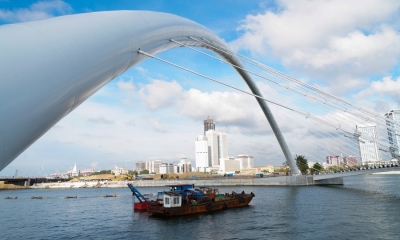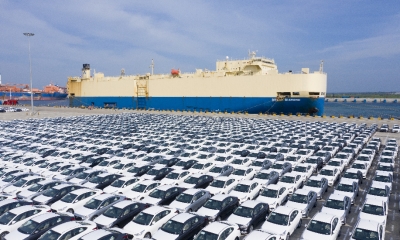The Belgrade-Budapest Railway Is Testament to the Mutually Beneficial Cooperation
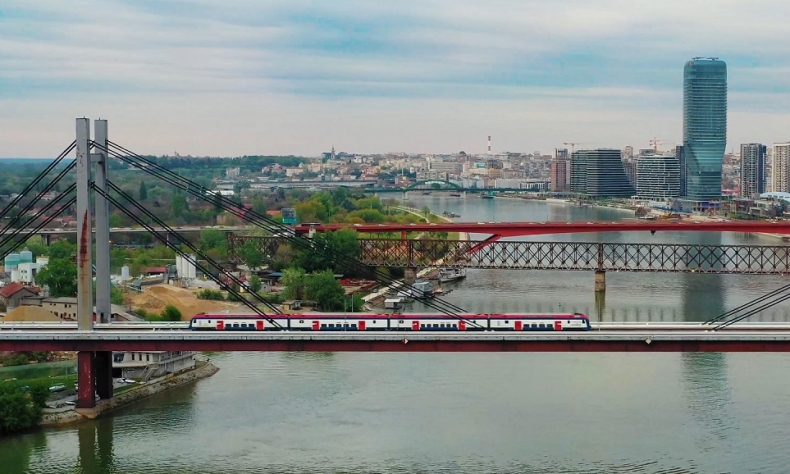
This project is of great significance to infrastructure development and connectivity in the region, and to China and Central and Eastern Europe Countries (CEECs) cooperation.
Five years after embarking on his last European tour, Chinese President Xi Jinping kicks off a six-day trip to Europe from May 5 to 10. President Xi’s state visit to France, Serbia, and Hungary is expected to enhance bilateral relations with the three countries and strengthen China-Europe cooperation.
The year 2024 marks the 60th anniversary of the establishment of China-France diplomatic relations and the 75th anniversary of the establishment of diplomatic ties between China and Hungary, which gives the visit special meaning as an important opportunity to build on past achievements and guide the future for bilateral ties. Xi’s visit to Serbia will be his second visit to the country in eight years, which will mark an important milestone for strengthening and elevating China-Serbia ties.
Hungary is the first European country and Serbia was among the first countries to sign a cooperation document with China on joint promotion of the Belt and Road Initiative (BRI). Since then, their relations have become increasingly close. The fruitful Belt and Road cooperation among these countries is a testament to the mutually beneficial cooperation. For example, the Belgrade-Budapest railway is a flagship project under the BRI.
Connecting the capital cities of Hungary and Serbia, the Belgrade-Budapest railway is a 350-kilometer-long double-track electrified high-speed rail line project. The outdated Belgrade-Budapest railway is being modernized to improve the connectivity between Hungary and Serbia.
China, Hungary and Serbia reached an agreement for the construction of the Belgrade-Budapest high-speed railway project at the summit of the “16+1 initiative” in Belgrade in December 2014.
The project involves the construction of new second tracks to deliver a new double-track line and the reconstruction of existing single-track along the route. The 341.7 km Belgrade-Budapest rail line project covers the construction of 183.1 km tracks in Serbia and 158.6 km in Hungary. The dual-purpose railway will transport passengers and freight between the capitals of Serbia and Hungary.
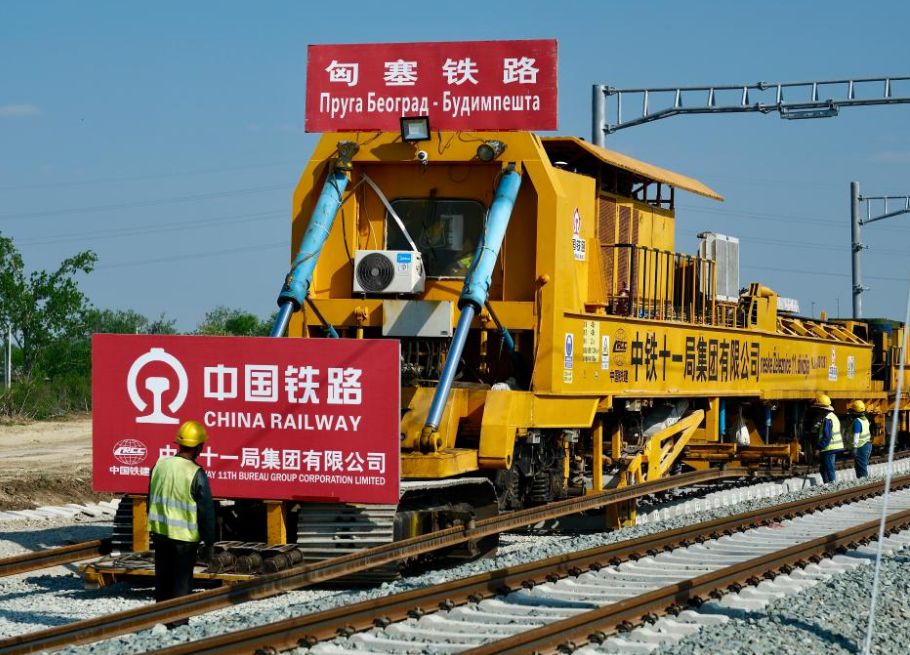
This railway line was designed to accommodate passenger trains with speeds of up to 200 km/h from the current 80 km/h, while the trains on the route will be able to operate at a speed of 160km/h. This new high-speed rail will provide a transport connection in just two hours and 40 minutes between Belgrade and Budapest from the current eight hours. The rail line will comply with European Train Control System (ETCS) standards as per EU requirements.
As much as 85 percent of the project’s investment is financed by the Export-Import Bank of China through a 20-year loan of $1.8 billion to Hungary and $1.3 billion to Serbia and the rest will be covered by the Serbian and Hungarian governments.
In Hungary, the rail project involves the modernization of a 152 km single-track line, the building of its double track covering a total track restoration of 339 km and the deployment of the ETCS Level 2. The project also includes the upgrade and modernization of eight stations and the reconstruction of five stations. Work on the Hungarian section commenced in July 2020 and entered the civil engineering construction phase in February 2022.
In Serbia, the project includes three primary sections: the 34.5 km Belgrade-Stara Pazova section, the 40.4 km Stara Pazova-Novi Sad and Novi Sad-Subotica (towards the border) with a length of 108.1 km.
The Belgrade-Budapest high-speed railway is undertaken by China Railway International Co. Ltd. and a Chinese consortium.
The 80-kilometer section, which links Belgrade and Novi Sad, the capital and second-largest city of Serbia, began operations in March 2022. On average, more than 50 train services on the route have been operated daily from 5:30 am to 10:30 pm since the railway opened.
The Belgrade-Budapest railway project achieved a significant milestone as the tracks on the Novi Sad-Subotica section were successfully connected on April 25, 2024, in the Serbian city of Backa Topola.
The Serbian section of the Belgrade-Budapest railway line will be completed by the end of 2024. The Hungary section is currently under construction. Initially projected completion of the entire project is by summer 2026, however the recent progress suggests an earlier completion by the end of 2025 if all goes according to plan.
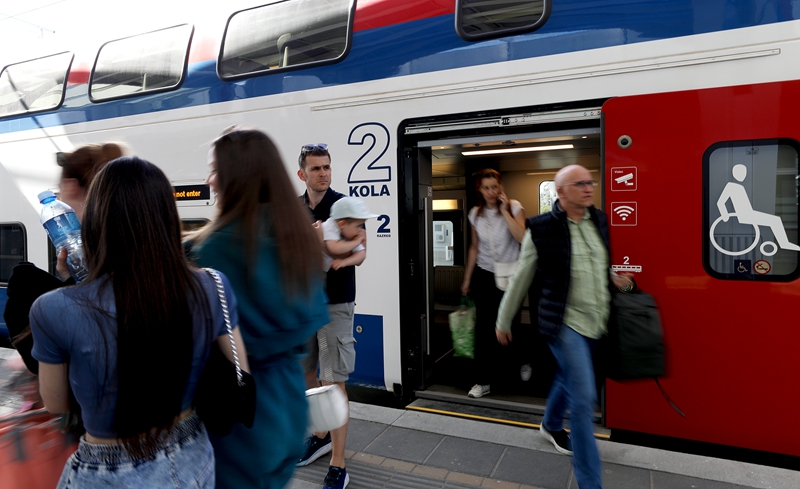
The Belgrade-Budapest high-speed railway, once completed and connected with railways in Greece, will be a land-to-sea passage in Central Europe via Greek ports, offering unprecedented access to the sea for both Serbia and Hungary. Also, this railway line forms a crucial part of ongoing rail infrastructure development in the Western Balkans, offering a shorter transport corridor than the currently existing alternatives.
China’s COSCO Shipping Group also invested in the Greek port of Piraeus which has become the first pillar of China’s new Maritime Silk Road in Europe. Piraeus Port is among the top container ports in the Mediterranean and one of the largest ports for integrated services in Europe. It is a major connector between the Maritime Silk Road and Europe.
This rail line is also expected to significantly improve the local transportation, which will contribute to the formation of the China-Europe international trade corridor, and promote the development of the local economy. The project is expected to bring remarkable economic benefits to both countries and transform Hungary into a regional logistics hub.
Chinese electric vehicle (EV) maker BYD is also building an EV manufacturing plant in Szeged, Hungary. This is the first Chinese car maker that builds a passenger car plant in the EU. The upgraded high-speed rail connecting with Piraeus Port will facilitate the automobile supply chain in Hungary. And Hungary also embraces Huawei’s largest base in Europe.
This project is of great significance to infrastructure development and connectivity in the region, and to China and Central and Eastern Europe Countries (CEECs) cooperation. The railway is also the first project to align China’s railway technology and equipment with the EU’s technical standards and specifications for railway connectivity. The benefits brought by the railway for Serbia and Hungary as well as neighbouring countries will become more prominent in the future.
The article reflects the author’s opinions, and not necessarily the views of China Focus.
 Facebook
Facebook
 Twitter
Twitter
 Linkedin
Linkedin
 Google +
Google +




